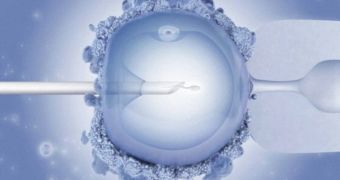One of the most common scenarios women come across when opting for in-vitro fertilization (IVF) is that in which they develop multiple pregnancies. A team of experts in the United Kingdom recently managed to develop a technique that increases IVF success rates and reduces multiple pregnancies.
The University of Cambridge group says that many women have to undergo this type of treatment several times before they manage to get pregnant. At the same time, even if they succeed, they have a high probability of developing multiple pregnancies, as in twins or triplets.
These are two of the main drawbacks of IVF as an assisted reproduction technique, and this is why the British team decided to focus on them in their research. The goal was to find out how to increase chances of successful fertilization, while at the same time reducing unwanted multiple pregnancies.
During studies of the human egg – made only hours after successful fertilization had occurred – experts determined that specific patterns of movements can be used to indicate which of the new embryos are most likely to succeed.
Researchers published details of their investigation in the August 9 issue of the top scientific journal Nature Communications. The team adds that fertilized eggs are not implanted in women right away, but two or three days afterwards.
The reason for the delay is to give doctors time to determine if the progress an embryo exhibits by this stage makes it a candidate likely to succeed inside the womb. But most of the human embryos that fail do so after about five days, before they reach the blastocyst stage of development.
In order to counteract this fault, IVF experts implant several embryos at once, and this is the main reasons why multiple pregnancies appear at the same time. In the clinic, doctors prefer to wait for 5 days before implanting, just to make sure the embryo is fit.
“There is a need to ensure that the embryos which are implanted into the mothers are those which stand the greatest chance of resulting in a successful live birth,” professor Magdalena Zernicka-Goetz says.
“It is important to be able to quantitate some indication of the health of embryos at the earliest possible stage in order to minimize the time they have to spend outside the body of the mother,” she adds.
Zernicka-Goetz holds an appointment as a professor at the Cambridge Department of Physiology, Development and Neuroscience, and at the Wellcome Trust/Cancer Research UK Gurdon Institute. She is also the lead author of the new study.
The new technique she and her team developed enables doctors to better predict which embryo will survive until birth. The approach works even when analyzing embryos that are just a couple of hours old.
“This outcome represents years of work in building the necessary experience and bringing a team of talented scientists together, but it has been well worth it,” the team leader explains.
“When we obtained the first promising results nearly five years ago, we applied for funding from the Wellcome Trust and fortunately were successful and so could continue our work,” she concludes.

 14 DAY TRIAL //
14 DAY TRIAL //